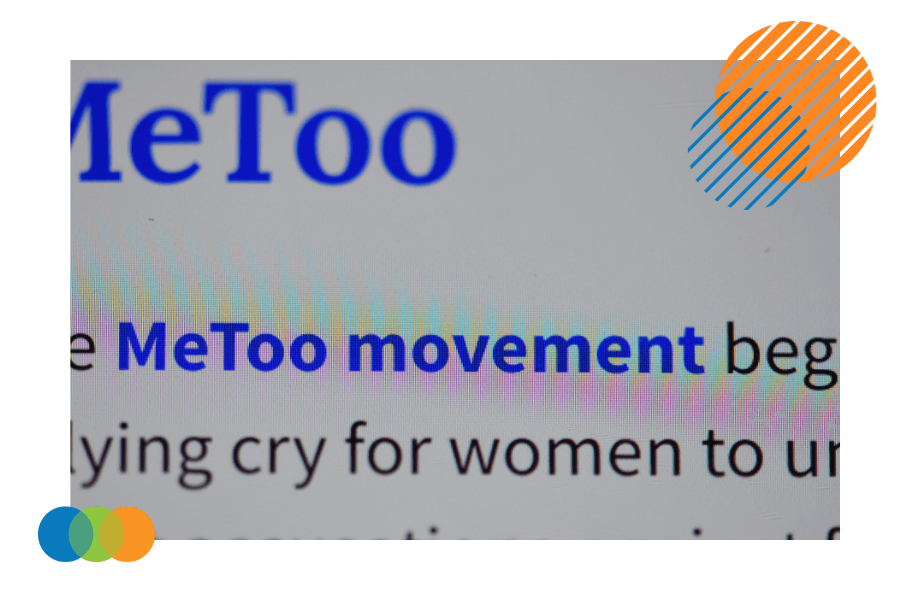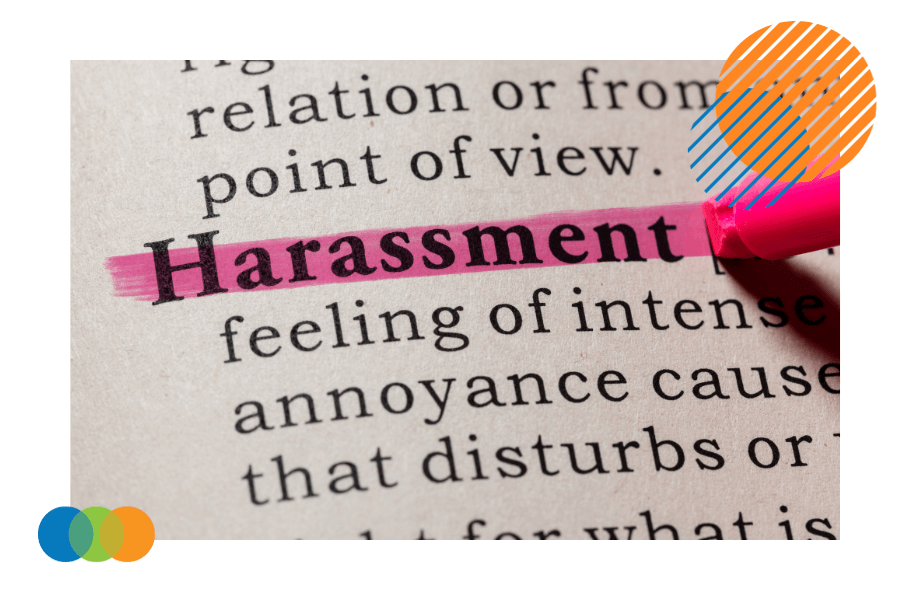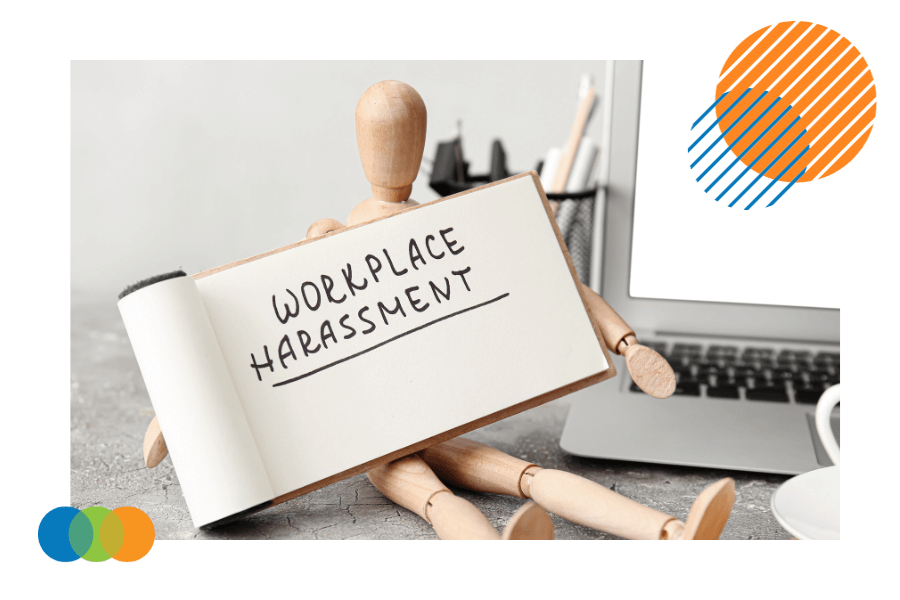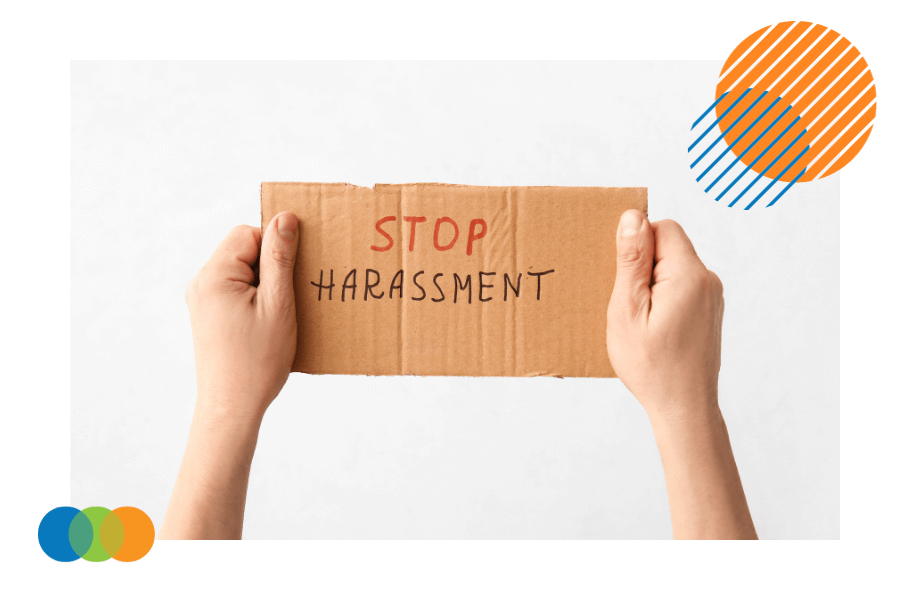 |
Written by Liz McDermott |
There was a time not too long ago when companies believed it was enough to identify a few obviously inappropriate behaviors that constituted ‘workplace harassment,' set up a grievance committee whose members almost always reported to someone who had the potential to be the harasser and end it at that. However, corporate culture has advanced in leaps and bounds, even in the last 3-4 years.
In the era of #MeToo and #BlackLivesMatter movements, many individuals have felt encouraged to share their experiences of discrimination and sexual harassment at the workplace. Crossing industry and geographical lines, BIPOC and LGBTQ2S+ persons have shared experiences of racial and gender discrimination and sexual and mental harassment.
Organizations have come to realize that it's not just the Fox News, Facebook, and McDonald's of the world that need strict anti-harassment policies and sensitivity training. Workplace harassment prevention training is an essential component of keeping the business going, irrespective of the size and scale of your organization.

Workplace Harassment: What's In It For Your Company?
It is evident from allegations that constitute sexual harassment that have been publicized in the recent past that cases of misconduct and workplace harassment do more than damage the victim. An organization with a less than thorough anti-discriminatory and anti-harassment policy is likely to suffer a great deal of damage to its reputation.
With the intensifying power of social media, we've seen many boycott campaigns against companies that have allowed discrimination and workplace harassment to mushroom under a cloud of (sometimes willful) ignorance. A less-than-stellar reputation in a highly competitive market also means losses in market growth and market share. There is a rising sensitivity in the workplace toward implementing a comprehensive anti-harassment policy, and many organizations have done a good job at it.
For instance, a common and extremely important policy is zero tolerance against sexual harassment. In addition, sexual harassment training is one of the most sought-after subjects for harassment-related compliance training in the workplace. Employers have come to realize that relying on an individual to self-regulate and self-educate is not enough. A large section of the workforce enters the market with a rudimentary understanding of what constitutes sexual harassment. But in truth, what is sexual harassment and discrimination prevention training?

Understanding Sexual Harassment Training Courses
Sexual harassment is defined by the Equal Employment Opportunity Commission (EEOC) as unwelcome sexual advances, requests for sexual favors, and other verbal or physical conduct of a sexual nature. At the workplace, it could manifest as:
- Submission to such conduct is made either explicitly or implicitly a term or condition of an individual's employment
- Submission to or rejection of such conduct by an individual is used as a basis for employment decisions affecting such individual
- Unreasonably interfering with an individual's work performance or creating an intimidating, hostile, or offensive working environment
Sexual harassment training is in demand not only because of its pervasiveness in the history of global work cultures but also because of the nuances of the subject. There is a lot more emphasis on defining concepts and identifying subtle harassing and discriminatory behaviors that were previously concealed under one big umbrella. This evolution in workplace harassment training is more relevant than ever because it empowers victims to label misconduct, which not only has emotional and mental consequences but legal ones as well. For instance, how many of us know what is quid pro quo sexual harassment?
Does this sound familiar—“Go on a date with me, and I will personally make sure your performance review goes well.” How about this one—“If you join me for a drink tonight, I'll take you with me to the conference in London next week.” If you or someone you know has heard such demands, they're a victim of quid pro quo sexual harassment.
Quid Pro Quo refers to an exchange between an employee and someone who has power or authority over tangible aspects of the employee's compensation, privileges, and terms and conditions of employment. Labeling quid pro quo sexual harassment and other manifestations of sexual harassment in general, for instance, creating a hostile work environment, enables organizations to implement targeted corrective action. Sexual harassment is but one example. There are any number of harassing and discriminatory behaviors that occur in the workplace based on protected characteristics defined by law.

How to Implement Workplace Harassment Prevention Training
Federal and several local legislative bodies have strengthened their anti-harassment laws and increased the training requirements for employers. Creating awareness is easier than changing behaviors, which is why some organizations stop once they've implemented measures to create awareness of harassment.
Training can become especially complicated if the organization has employees that span across multiple geographies. Add to that the notion that compliance mandatory training requirements is usually considered boring and a check-box activity. This is where organizations seem to struggle the most.
Getting Started With Workplace Harassment Training
Let's start simple. Creating awareness is very important. Without raising the collective consciousness, right from the CEO to an entry-level new hire, you will not see internalized change across the organization. Awareness training on sexual harassment prevention policy in the workplace will focus on the basics. Here are some examples:
- Defining harassment and discrimination in all its forms
- Federal and local laws and regulations
- Recognizing and reporting harassment and discrimination
- Retaliation and zero-tolerance
- Stakeholders responsible for harassment prevention
- Stakeholders who will handle complaints (if there is such a body) and the complaint process
Workplace Harassment Training for Managers
It is also best practice to implement separate training programs for managers/supervisors and employees/subordinates. While it is important to recognize that anyone and everyone can be a victim of harassment, it is also important to understand the balance of power and vulnerable positions in the organization's hierarchy.
Studies have shown that mid-level managers and supervisors play a pivotal role in preventing and addressing harassment in the workplace. They set the tone for the culture within their teams. Their conduct and attitudes determine how much value their teams place on complying with the company's code of ethics. They are the first line of defense when misconduct occurs.
If managers are not empowered to address harassment, a higher number of incidents could be swept under the rug. This could potentially endanger the culture of an entire organization.
An important aspect of implementing sexual harassment and discrimination prevention training for an inclusive workplace is complying with legal requirements. Depending on which laws apply to your organization, you might need to comply with content and seat-time requirements.
What are the content requirements?
Some legislations will specify the nature of the behavior and the content that should be covered in anti-harassment training. This could include specific definitions, statements, and other critical information that should be shared with employees.
What are the seat-time requirements?
Some legislation will specify how long the next training program should be. Sometimes, it applies to all organizations under its jurisdiction, and at other times, it could only apply to organizations of a certain size or scale.

Don't Stop at One Annual Training
Lasting change is a journey. It cannot be achieved through one training. That's why, when you look at training employees on harassment in the workplace, create short-, medium-, and long-term goals. Here are some steps you can implement to achieve lasting change in online harassment training now.
- Start with what you know—an awareness training. You can create one yourself, or you can engage learning professionals to build one for you. Engaging professionals from the learning industry will enable you to focus on collaborating with them on the content while they take care of the look and feel of the training and method of delivery. Foundational training can be offered to current employees as well as new hires.
- Follow up with your employees on the effectiveness of the training.
- Offer refresher courses periodically. Remember, anti-harassment training is not one-and-done.
- Use other methods to refresh—infographics, mass mailers, etc.
- Create a day focused on anti-harassment with engaging activities that can be done at a team or organizational level, depending on the number of employees.
- Create an autonomous team that will handle harassment complaints. This team can be as small as two people, depending on the size of your organization.
- Engage decision-makers to implement a comprehensive anti-harassment policy. This will likely be an umbrella policy that encompasses others like a sexual harassment policy, policy on racial bias, policy on gender bias, etc.
- Create anti-harassment champions at different levels of the organization. Because these champions understand ground reality, they will be well-positioned to receive feedback from those they oversee and pass that on to the higher-ups to make informed decisions.

What Makes a Good Anti-Harassment Training?
If your first step in implementing anti-harassment training is in the form of a foundational course, you should be looking at it as a phase. Depending on the size of your organization, it might take a few weeks for your whole organization to go through the online training course.
An effective anti-harassment course will be thought-provoking. It will likely use scenarios to prompt your employees to wear different hats and assume decision-making positions. It will also likely reveal biases they did not realize they held. When implementing anti-harassment training, you will want to look for or create one that will keep your employees engaged instead of defaulting to a check-box activity. It should be interactive and not passive, i.e., learners want to feel involved in the process instead of having a screen talk at them.
Best Online Harassment Training
The learning industry has morphed extensively in the last few years. For one, digital learning has replaced in-person classroom training. Mobile device learning offers your employees access to the flexibility to take a course at any point in time. Known as self-paced courses, they offer flexibility and little disruption of productive time. However, you will want to make sure that there is an end date in sight for your employees to complete phase one.
Whether you're a line worker or a manager, you know that bias is everywhere, and it's inevitable. However, it becomes a problem when it turns into discrimination and harassment. Remember, the foundation of a zero-tolerance work culture begins with a strong awareness training on diversity and anti-harassment.
You can train your employees on anti-harassment policies and respectful workplace practices through Vubiz's vast array of courses and tools. We also offer specific courses on sexual harassment and discrimination prevention, which you can buy through our online store.
For more information, please contact us to inquire about our Workplace Harassment Prevention training.
